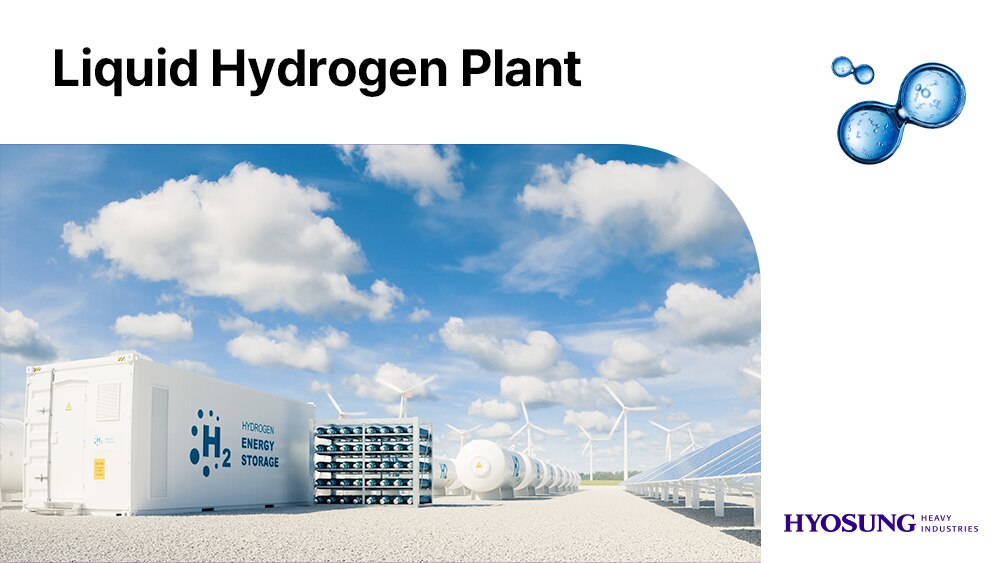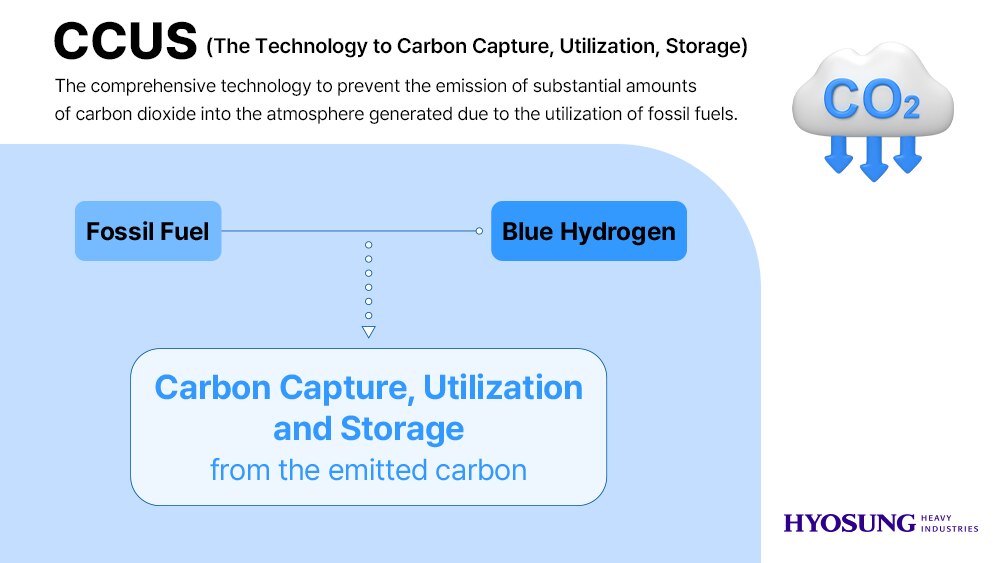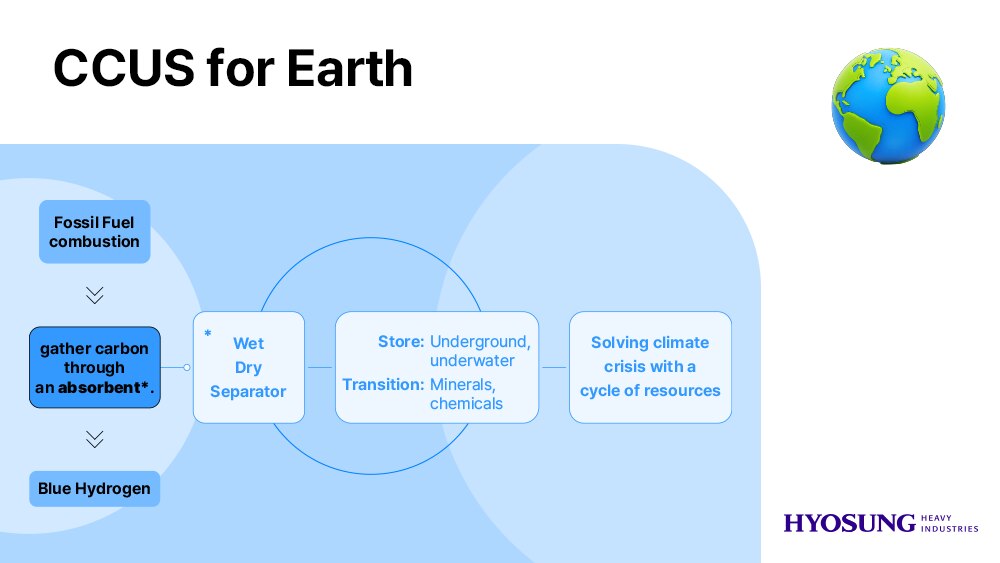The Journey Towards Carbon Neutrality with Unparalleled Blue Hydrogen
品牌新闻
Apr 05, 2024
Previously, we discussed the topic of green hydrogen, which is the most eco-friendly hydrogen form. While green hydrogen is produced by using renewable resources and emits no carbon during the production process, it is still hampered by technological, economic, and environmental obstacles. It is important to address is the high storage and transportation costs, which make it integration into daily life possible only after 15-20 years. Until the ultimate eco-friendly hydrogen, green hydrogen, becomes widely available, we can use an accessible alternative, blue hydrogen.

Contemporary Hydrogen. Blue Hydrogen!
Blue hydrogen follows the same production method as grey hydrogen but minimizes greenhouse gas emissions by capturing the carbon dioxide generated during the grey hydrogen production process. It can be considered an intermediate step towards green hydrogen. Blue hydrogen significantly reduces carbon emissions compared to traditional methods because it captures and stores the carbon dioxide emitted from fossil fuels. The essential technology required for this process is Carbon Capture, Utilization, and Storage (CCUS). Hyosung is developing CCUS to make blue hydrogen a reality. The company plans to implement a virtuous cycle that reduces CO₂ emissions, and fulfills the role of a bridge to carbon neutrality until green hydrogen is secured.

CCUS: The indispensable Technology Transforming Grey to Blue
CCUS, which stands for Carbon Capture, Utilization, and Storage, is essential technology that transforms grey hydrogen into blue hydrogen. It encompasses two distinct processes- CCS(Carbon Capture & Storage) for gathering and storing carbon from fossil fuels, and CCU(Carbon Capture & Utilization) for converting and utilizing captured carbon as a valuable resource.
The CCUS technology involves capturing, transporting, storing, and utilizing carbon capture technology is classified into three categories depending on the point and method of carbon capture. 'Post-combustion capture,' captures carbon through an absorbent in the exhaust gas after fossil fuel combustion, 'pre-combustion capture,' captures carbon during the process of producing synthesis gas from fossil fuels, and 'oxy-fuel combustion,' supplies high-purity oxygen for fuel combustion, resulting in the emitted gas composition becoming carbon and water vapor. The most common form is 'post-combustion capture,' which separates carbon from combustion gases using an absorbent, further divided into wet, dry, and membrane types based on their properties. In particular, the wet method using liquid absorbents has been widely applied in various power plants and factories since the 1990s, with a relatively high level of technological maturity and the advantages of low investment costs and mass production.
Sequestered carbon is stored in deep subterranean rock strata over a kilometer beneath the Earth's surface through a variety of methods, typically isolated in underground or underwater locations to prevent it from escaping into the atmosphere. However, recent technological advancements have enabled the transformation of sequestered carbon into construction materials and high-polymer chemical products through processes involving minerals, organisms, and chemistry. The ongoing development of carbon capture and utilization (CCU) technology enables repurposing of carbon dioxide into novel materials, facilitating a cycle of resource utilization and simultaneously mitigating the climate crisis by reducing atmospheric carbon dioxide levels. The remarkable evolution of CCUS technology continues to pave the way for innovative utilization of carbon dioxide.

Envisioning an Environment-friendly Future with Zero Carbon Emissions through the Recycling, Reusing, and Reducing of Carbon Usage.
According to the International Energy Technology Research Institute, the global CCUS market is projected to more than double from $1.6 billion in 2020 to $3.5 billion by 2025. The growing importance of CCUS technology lies not only in its potential to reduce carbon emissions, but also in its ability to transform captured carbon into novel materials essential for various industries. Although it is nearly impossible to instantaneously neutralize all carbon emissions produced by humanity, CCUS technology makes carbon neutrality an achievable goal by repurposing collected carbon into useful resources. Indeed, the International Energy Agency (IEA) advocates CCUS technology as the sole means to carbon neutrality. As carbon emissions decrease, converting emitted carbon dioxide into hydrogen energy and novel industrial materials through CCUS technology appears similar to the carbon '3R' movement. Through CCUS technology, we can preserve the planet in the face of technological and industrial advancements.
Hyosung is deeply committed to hydrogen energy, viewing it as the foundation of an energy revolution that will transform the future of humanity. The company has expressed its determination to achieve a paradigm shift through continuous hydrogen energy investment. Hyosung actively contributes to the development of a hydrogen-based society through its research and development of CCUST technology for a more eco-friendly society. Hyosung recognizes that until hydrogen, particularly green hydrogen, becomes universally applicable in daily life, the company must tirelessly strive to reduce carbon dioxide emissions through the utilization of existing blue hydrogen. By building a structure that facilitates the virtuous cycle of resources, Hyosung aims to realize a carbon-neutral South Korea.
Hyosung continuously seeks to establish a sustainable environment for all present and future generations through diverse initiatives. With a genuine commitment to considering future generations, Hyosung applies its technological expertise to deliver a sustainable life by delivering a circular economy, carbon neutrality, renewable energy, and smart reduction across all its business units, thus pursuing authentic ESG management. With its ESG management, RE:GEN(Reply to Every generation's Future), Hyosung strives to reach all future generations with its technology. Particularly focusing on technological development that would both protect nature and generate essential energy. Hyosung has prioritized hydrogen, the element of nature, by utilizing energy derived from nature. Hyosung incorporates hydrogen energy into its materials, technology, transportation, and supply systems in order to protect the environment. Through its technological advancements and efforts to harness hydrogen's energy, Hyosung envisions a sustainable and cleaner future.